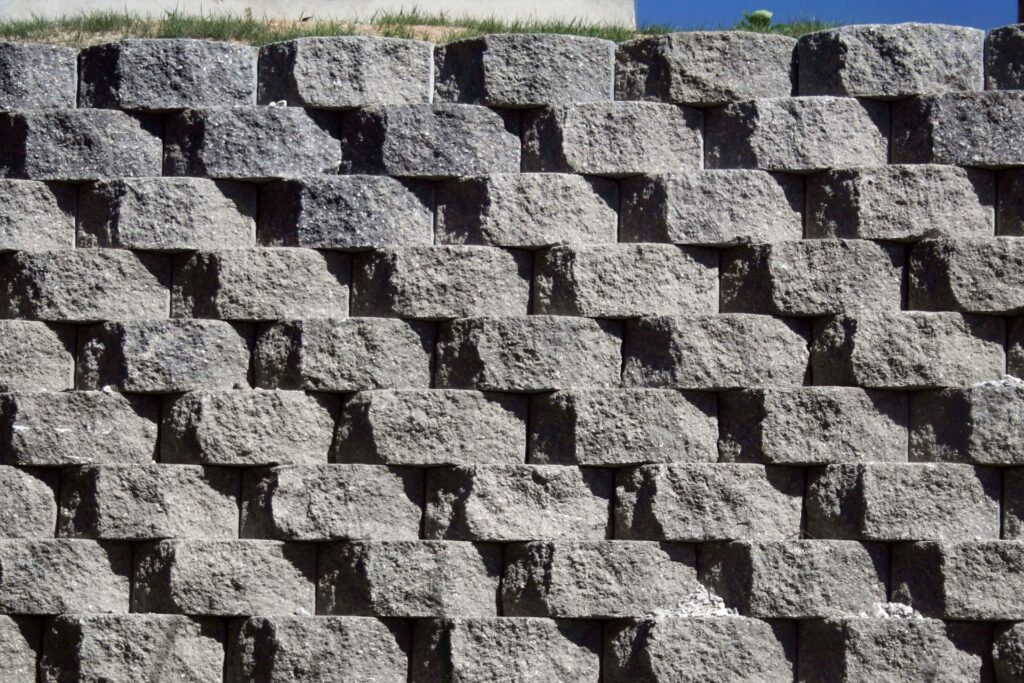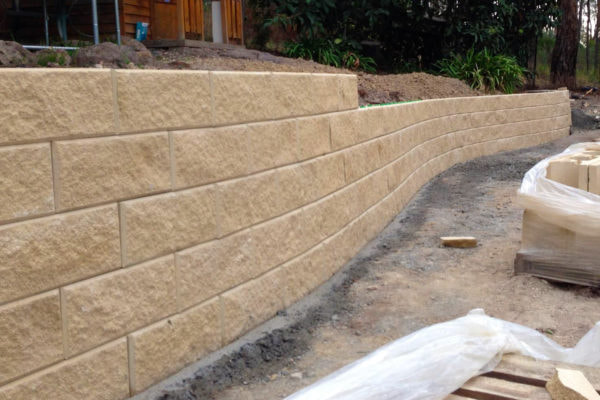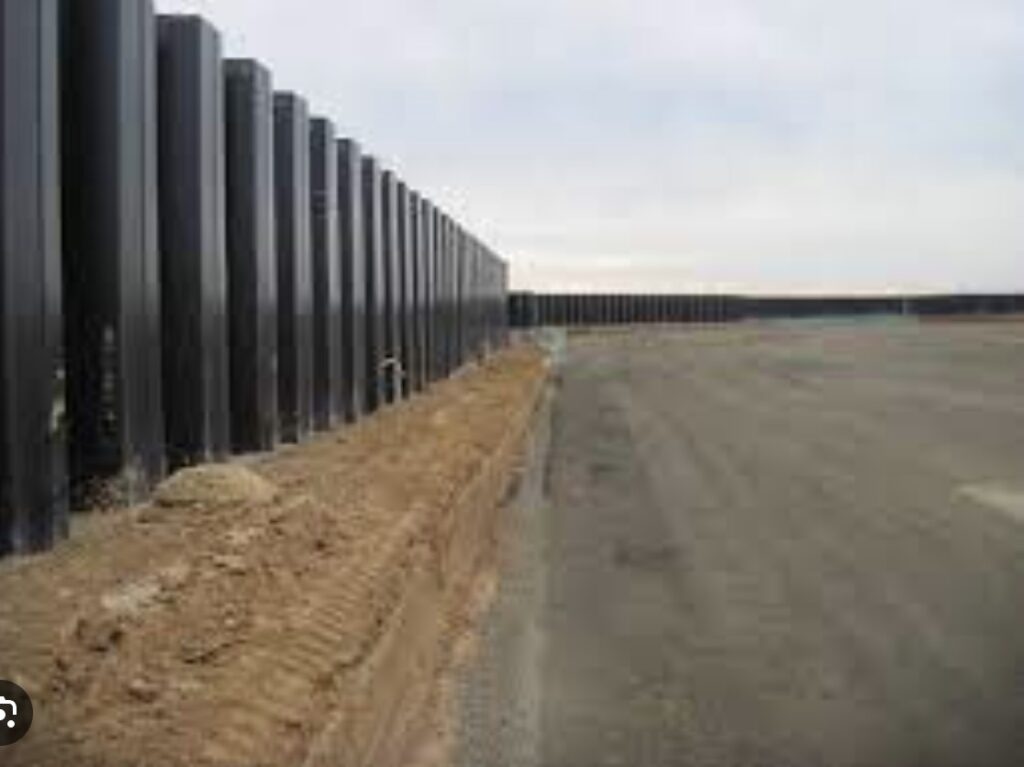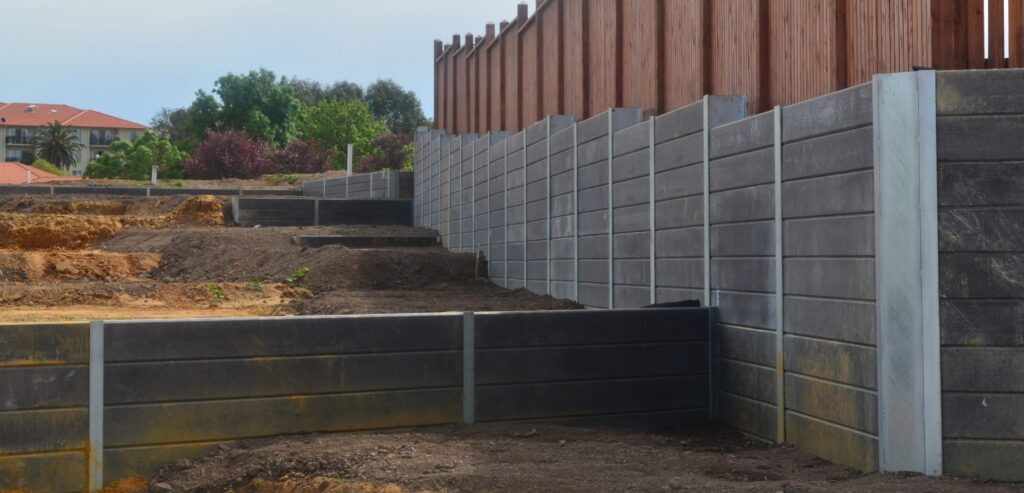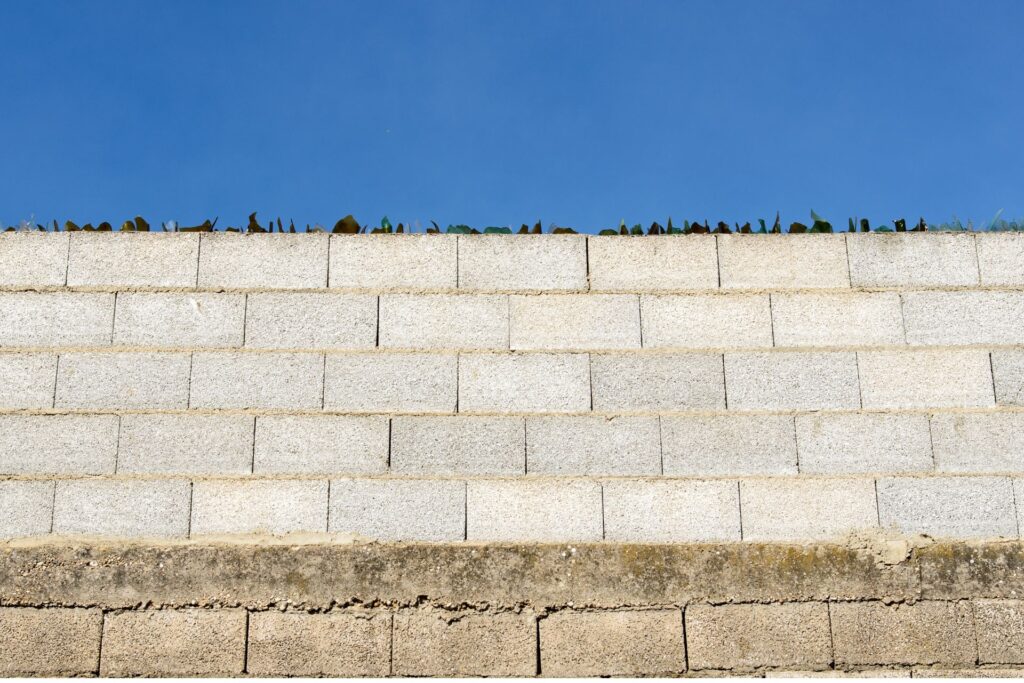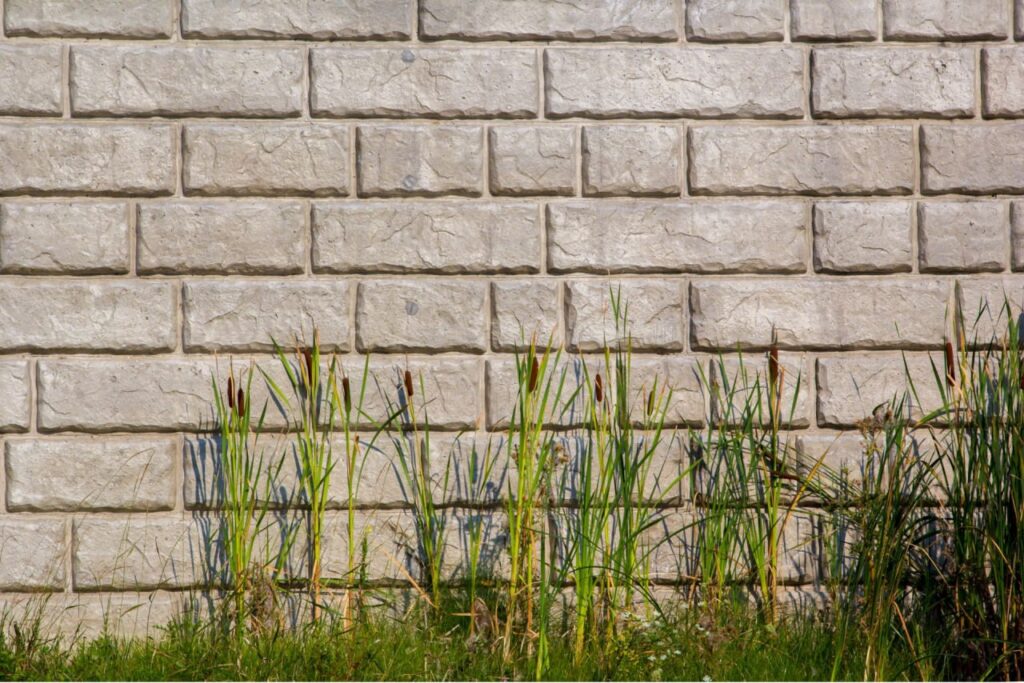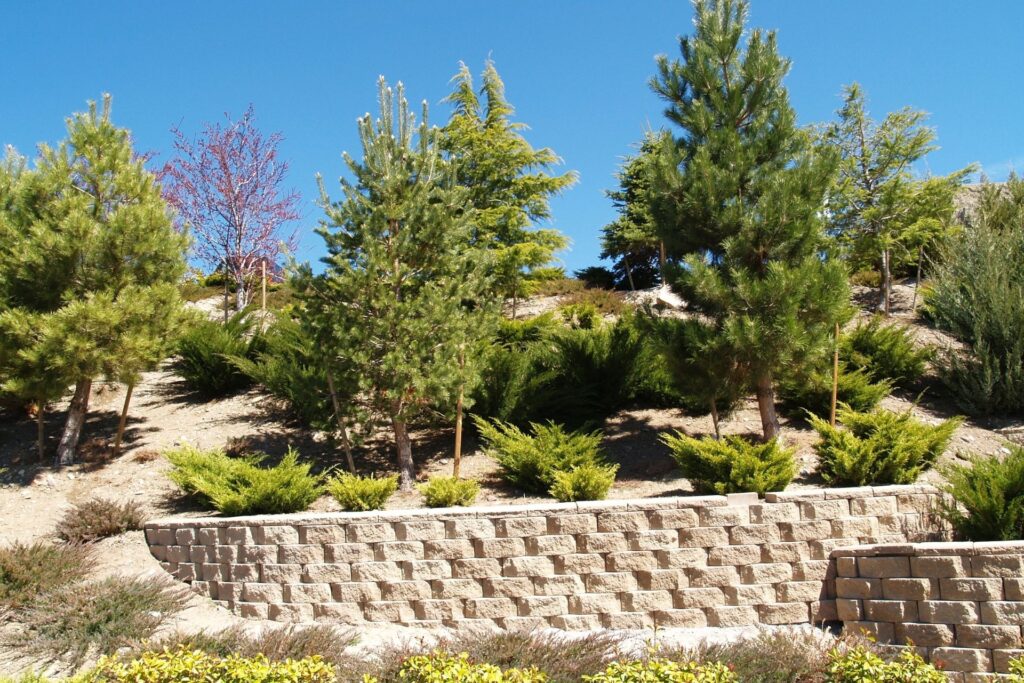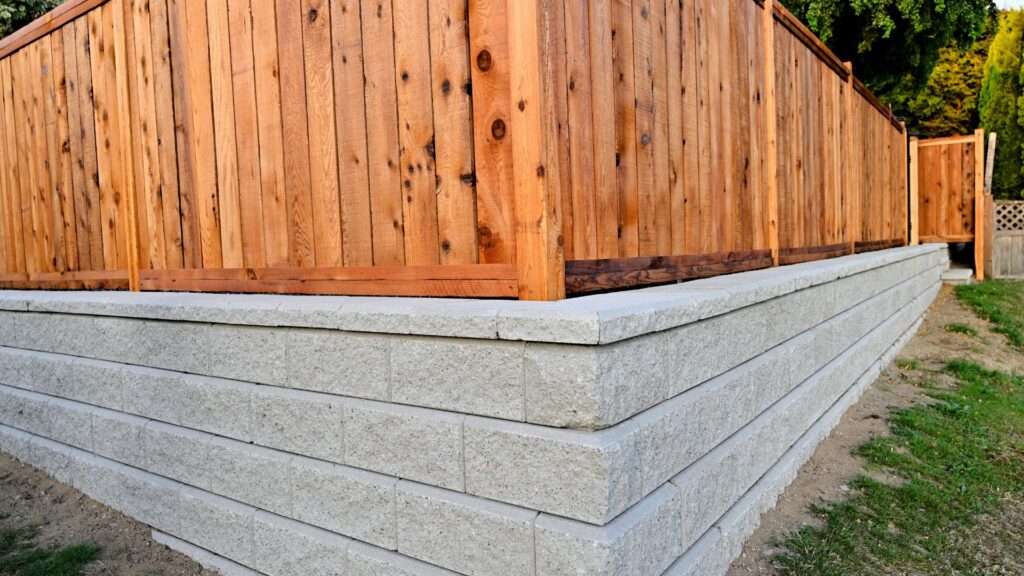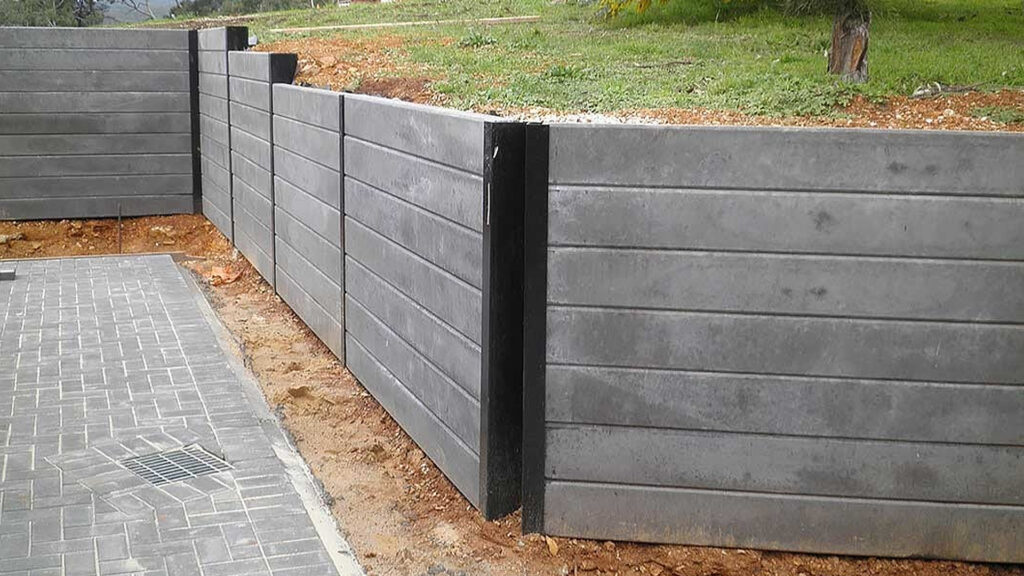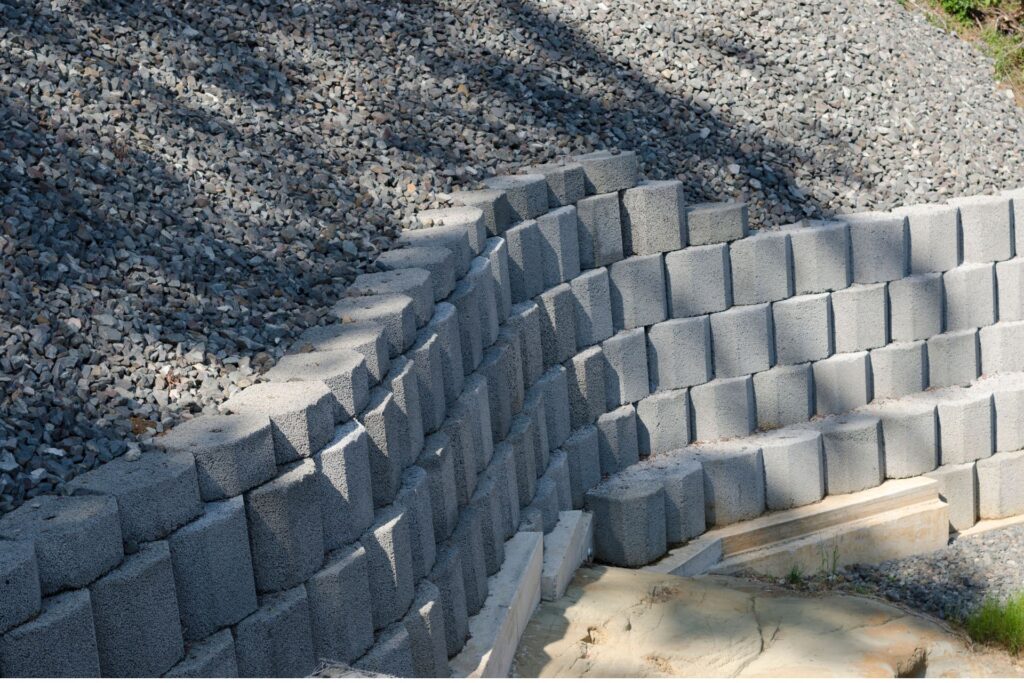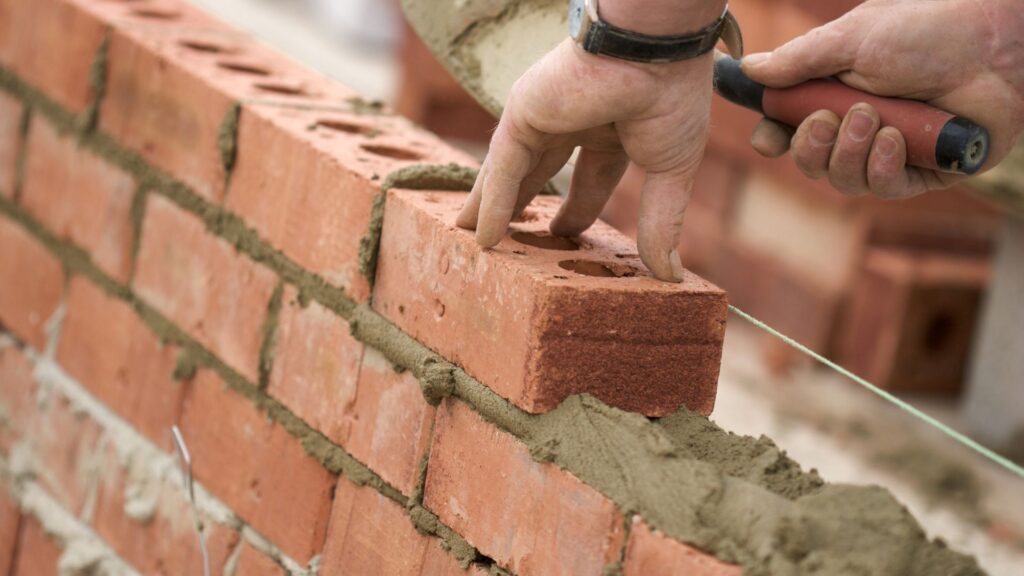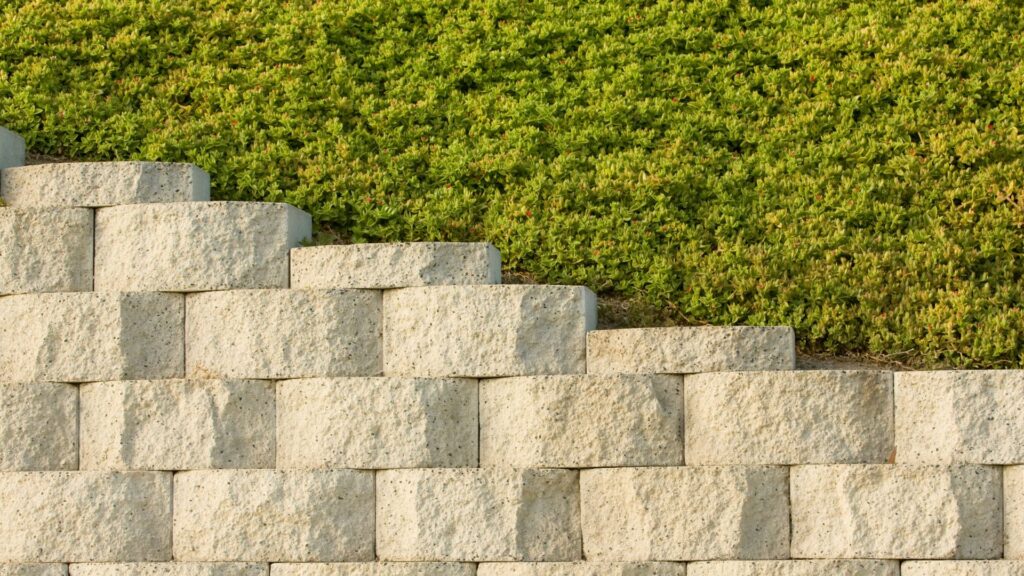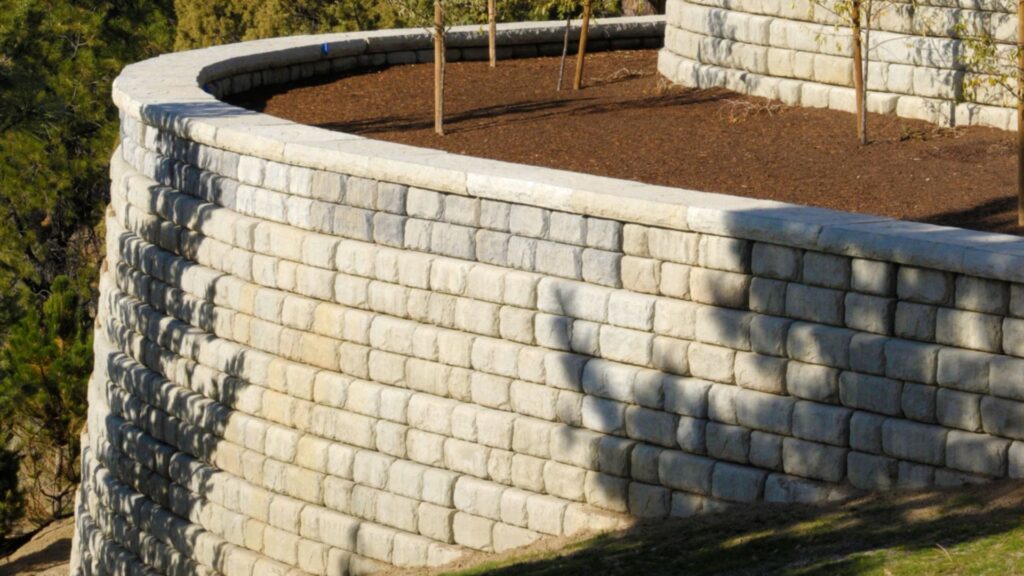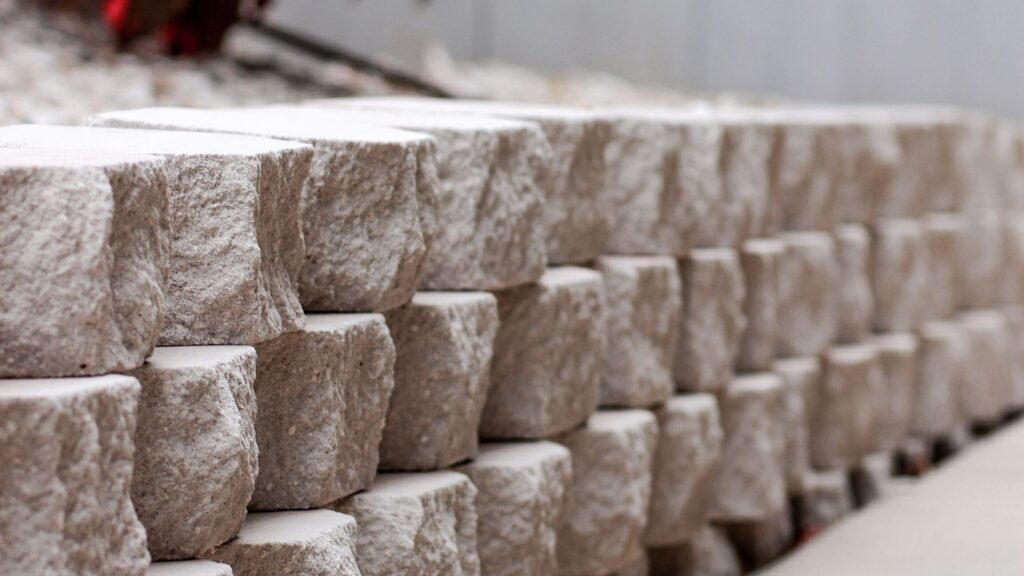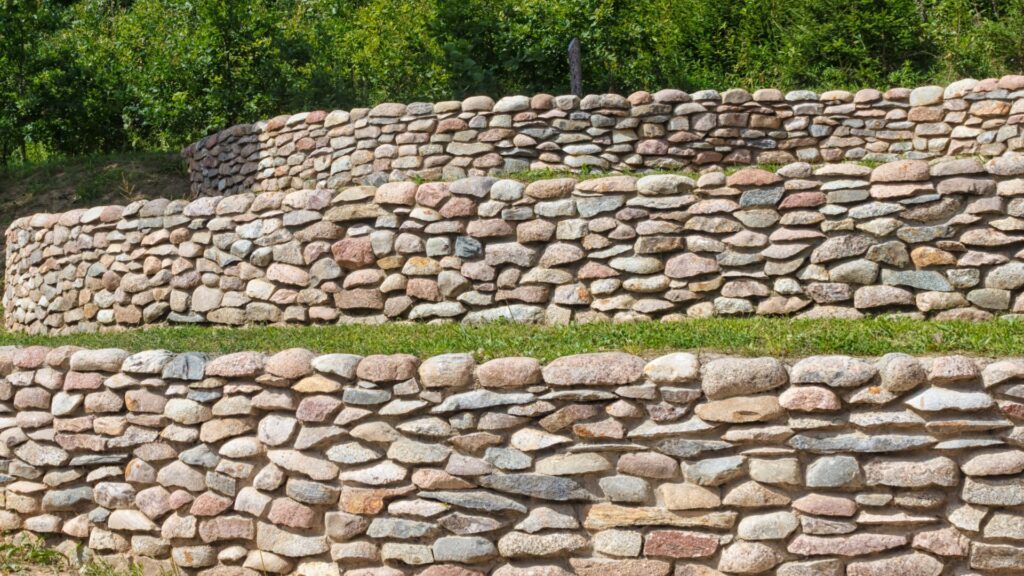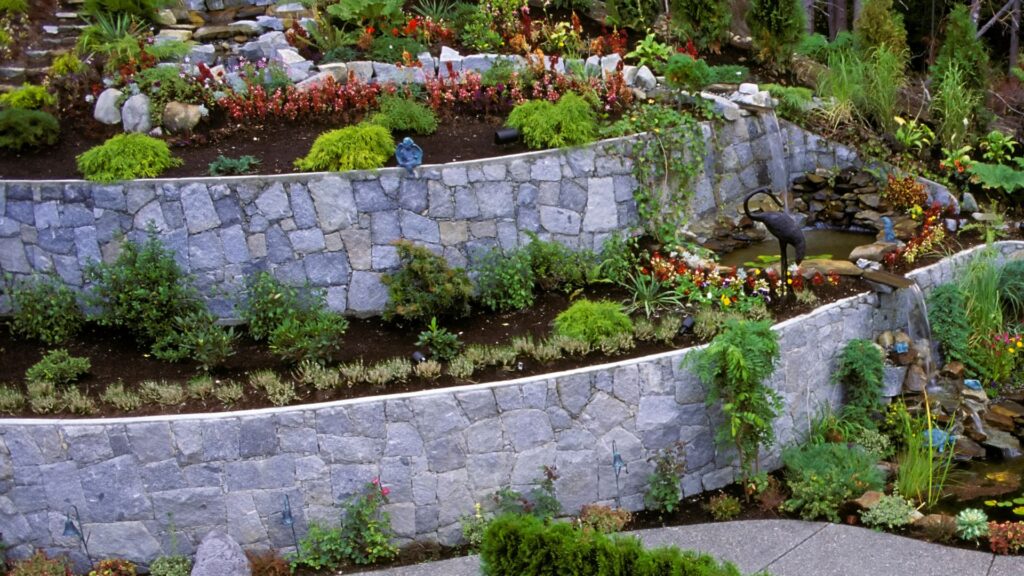Welcome to our comprehensive guide on building durable retaining walls in Auckland, where unique environmental challenges such as frequent rain and diverse soil types demand robust solutions. Retaining walls are not only functional, keeping soil erosion in check and managing water runoff, but they can also enhance the aesthetic appeal of your landscape. Whether you’re a homeowner looking to undertake a small garden project or a contractor involved in larger infrastructural developments, this guide will walk you through the essentials of planning, selecting the right materials, and constructing a retaining wall that stands the test of time. Our aim is to equip you with the knowledge you need to navigate local regulations effectively, make informed decisions, and achieve lasting results.
Building a durable retaining wall in Auckland requires careful planning and an understanding of local conditions. When constructing a retaining wall, consider the purpose—whether it’s for aesthetic appeal or functional use. Key factors include choosing the right materials, such as concrete, stone, or timber, which must be suitable for Auckland’s rainy climate and diverse soil types. It’s also essential to adhere to local building codes and regulations. Proper site preparation, including clearing, grading, and ensuring adequate drainage, is crucial for the longevity of the wall. By following these guidelines, you can ensure your retaining wall is both durable and effective.
Understanding Retaining Walls
When it comes to landscaping and construction, retaining walls play a crucial role in ensuring stability and aesthetic appeal, especially in areas like Auckland, where varying topographical features can pose unique challenges. This detailed guide will help you understand what retaining walls are, why they are necessary, and the different types that can be utilized to suit specific environmental conditions.
What is a Retaining Wall?
A retaining wall is a structure designed to restrain soil to a slope that it would not naturally keep to (typically a steep, unnatural slope). These walls are used to bind soils between two different elevations often in areas of terrain possessing undesirable slopes or in areas where the landscape needs to be shaped severely and engineered for more specific purposes like hillside farming or roadway overpasses.
Primary Functions of a Retaining Wall
Soil Erosion Control: Retaining walls helps prevent soil erosion by holding back soil which, without these structures, might otherwise be washed away by rainwater, especially in the hilly terrains of Auckland.
Water Runoff Management: These walls also manage water runoff by providing a way for water to be absorbed into the ground slowly, thus preventing floods and supporting water conservation efforts in urban areas.
By understanding these functions, property owners can appreciate the importance of retaining walls beyond just their aesthetic value.
Types of Retaining Walls
There are several types of retaining walls, each suited to different scenarios and environmental conditions. Here’s an overview of the main types found in Auckland:
Gravity Walls: These walls rely on their mass (stone, concrete, or other heavy material) to resist the pressure from the soil behind them. They are best suited for shorter slopes and can be built from pavers, bricks, and unmortared stone.
Cantilever Walls: Engineered with reinforced concrete, cantilever walls are used for taller slopes. They use a base slab and a thin stem of steel-reinforced, precast concrete or poured in place concrete walls. The base structure is crucial as it uses leverage to reduce the pressure exerted by the soil.
Sheet Piling Walls: Used primarily in soft soils and tight spaces, sheet piling walls are made from steel, vinyl, or wood planks which are driven into the ground. This type is ideal for waterfront properties and areas with loose soils.
Anchored Walls: Anchored walls can be any of the above types but include additional support from cables or other stays anchored into the rock or soil behind them. They are particularly useful in combating high loads or when the wall must be slender and would otherwise be too weak.
Pros and Cons
Gravity Walls: Simple to design and construct but not suitable for high loads.
Cantilever Walls: Strong and efficient for high loads but require careful construction and engineering.
Sheet Piling Walls: Effective in limited spaces and soft soils but may not be as visually appealing.
Anchored Walls: Extremely strong and can be adapted to various needs; however, they are more complex and costly to construct.
Each type of wall has its benefits and drawbacks, which should be considered carefully, especially considering Auckland’s rainy climate and varied landscape. The choice of retaining wall depends on the soil characteristics, the desired height of the wall, and budget constraints.
By selecting the appropriate type of retaining wall, property owners can effectively manage soil and water, contributing to a more stable and sustainable landscape. Understanding these basics and choosing wisely can lead to both functional and visually pleasing outcomes.
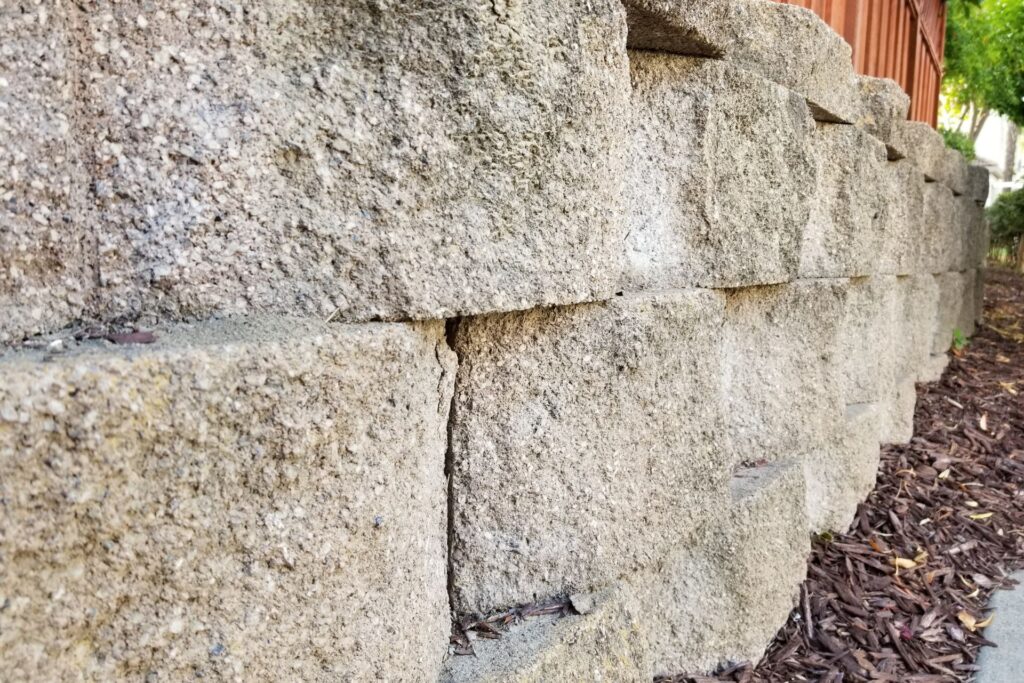
Planning Your Retaining Wall
When you’re thinking about building a retaining wall, it’s essential to begin with a thorough planning process. This ensures the wall not only meets your needs but also complies with local regulations, and ultimately, stands the test of time. Here’s a detailed look at how to effectively plan your retaining wall project.
Assessing Your Needs
Purpose of the Retaining Wall: Start by identifying the primary function of your retaining wall. Is it intended purely for aesthetic appeal, like enhancing your garden’s look with a decorative feature? Or does it serve a functional purpose, such as preventing soil erosion on a sloped property? Many retaining walls blend both elements, providing structural support while enhancing the visual appeal of the landscape.
Scale of the Project: The size of your project significantly influences the planning process. A small garden wall might be a simple weekend DIY project using basic materials like concrete blocks or timber. However, larger structural walls, like those needed to stabilize steep slopes, require more complex engineering. The scale of your project will affect everything from material selection to the complexity of construction and legal considerations.
Legal Considerations in Auckland
Local Regulations and Permits: Auckland, like many places, has specific regulations governing the construction of retaining walls. These rules often pertain to the height of the wall, materials used, and its proximity to property lines and public utilities. Before starting your project, check with your local council to understand what permits are needed and any other regulatory requirements. This step is crucial to ensure that your project doesn’t run afoul of local laws, potentially leading to costly fines or required modifications later on.
Consulting with Professionals: Regardless of the size of your wall, consulting with professionals like engineers and architects can be invaluable. These experts can help ensure that your wall is structurally sound, suited to your property’s geology, and aesthetically in line with your overall landscape design. Professional input is particularly crucial for larger, more complex projects that have significant functional requirements.
Design Considerations
Factors to Consider: Several critical factors need consideration during the design phase:
Soil Type: Different soils have varying strengths and moisture levels, affecting the wall’s stability and the appropriate construction technique.
Slope: The angle of your land can significantly impact the engineering requirements of the retaining wall.
Drainage: Proper drainage is essential to prevent water from building up behind the wall, which can lead to pressure that compromises the wall’s integrity.
Aesthetics: Finally, consider how the wall fits into your overall landscape design. The choice of materials and the style of the wall should complement your home and garden.
Importance of Professional Design and Planning: Engaging a professional to design your retaining wall can make a significant difference in its durability and functionality. Professional designs take all the above factors into account, ensuring that the wall not only looks good but also performs its intended function over time without failing.
By carefully planning your retaining wall, considering both practical and legal aspects, and seeking professional advice when necessary, you can enhance your property’s value and functionality. Proper planning also ensures that your retaining wall will be a durable, aesthetically pleasing feature that complements your outdoor space for years to come.
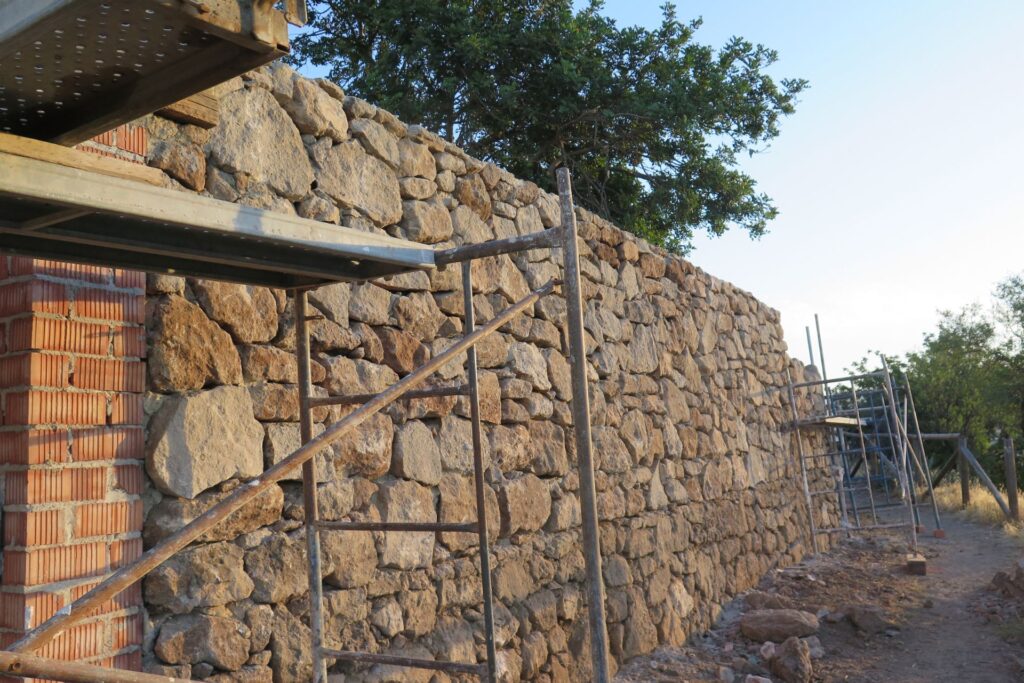
Choosing The Right Materials
When it comes to constructing retaining walls, selecting the right materials is crucial, not only for the structure’s integrity but also for its aesthetic appeal and longevity, especially in varying weather conditions like those in Auckland. This guide provides a detailed comparison of common materials such as concrete, stone, timber, and others, examining their benefits and limitations. Additionally, we’ll offer insights into choosing materials that are both sustainable and cost-effective, ensuring long-term benefits.
Detailed Comparison of Common Materials for Retaining Walls
Concrete: Concrete is a popular choice for retaining walls due to its strength and durability. It can easily withstand the heavy rains and occasional frost that Auckland experiences. Concrete walls can be poured into precise shapes and sizes, allowing for flexibility in design. However, they can be expensive in terms of initial outlay and are not the most environmentally friendly option due to the carbon footprint of cement production.
Stone: Natural stone provides a more aesthetically pleasing option and integrates well with natural landscapes. Stone walls are extremely durable and can handle Auckland’s weather without much wear. The limitations include higher costs for materials and labor, as stone can require more skill to install. Additionally, sourcing large quantities of natural stone can impact the environment.
Timber: Timber is a cost-effective and visually appealing option for retaining walls. It is relatively easy to install and can be treated to resist rot and pests. In Auckland’s humid climate, treated timber can be a practical choice, though it may not last as long as concrete or stone and will require maintenance or replacement over time. Timber is also a sustainable choice if sourced from certified forests.
Sustainability and Cost-Effectiveness in Material Selection
Choosing eco-friendly materials for your retaining wall is not only good for the planet but can also be economically advantageous in the long run. Here are some tips for selecting sustainable and cost-effective materials:
Look for Recycled Materials: Using recycled concrete or reclaimed stone can reduce both the environmental impact and the cost. These materials offer the same benefits as their newer counterparts but are more sustainable.
Consider the Lifecycle Costs: While some materials may be cheaper upfront, their long-term maintenance and replacement costs can add up. Materials like concrete and stone, though initially more expensive, often require less maintenance and last longer than cheaper alternatives like timber.
Evaluate Local Availability: Choosing materials that are locally available can reduce transportation costs and also lower the carbon footprint associated with your retaining wall project.
Long-term Cost Benefits of Durable Materials
Investing in durable materials for a retaining wall can lead to significant cost savings over time. Durable materials such as concrete and stone may have a higher upfront cost but tend to have lower ongoing maintenance requirements, resist weather-related deterioration better, and have longer lifespans. This means less frequent replacements and repairs, which can be particularly cost-effective in areas with challenging weather conditions like Auckland.
By carefully selecting the right materials for your retaining wall, you can achieve a balance between cost, aesthetics, sustainability, and long-term durability. This approach not only enhances your property value but also contributes to a more sustainable construction practice.
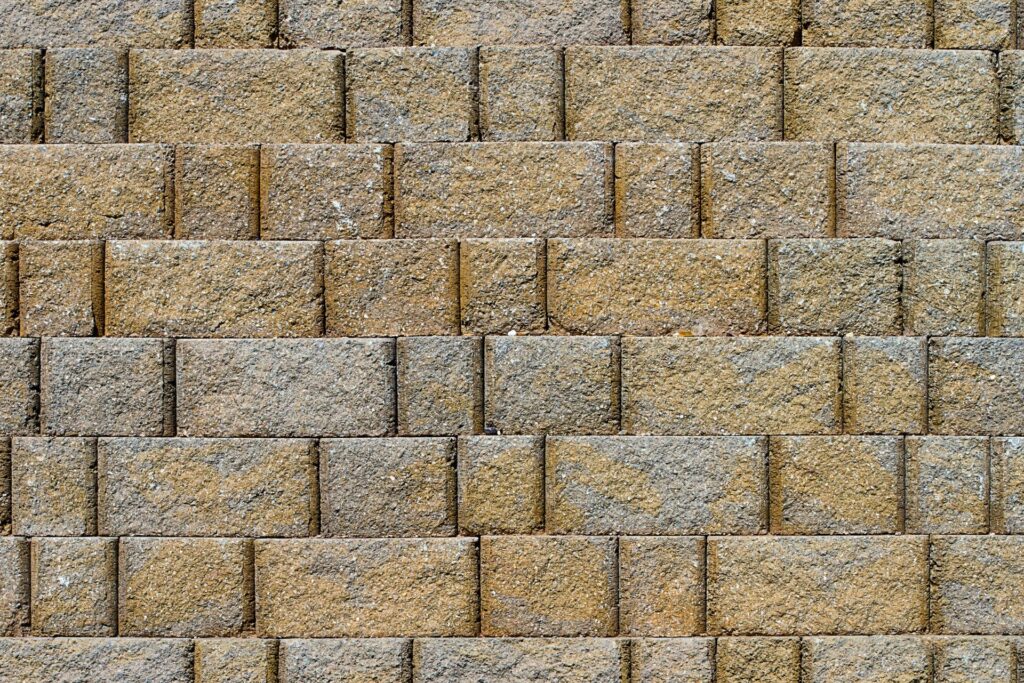
Construction Best Practices
In this section, we delve into the essential practices for constructing durable structures, focusing on site preparation, building techniques, and avoiding common mistakes. This comprehensive guide provides insights and practical tips to ensure that construction projects meet high standards of quality and durability.
Preparing the Site
Step-by-step guide on-site preparation (clearing, grading, and base preparation):
Before any construction can begin, proper site preparation is crucial. This process involves several key steps:
1. Clearing: This first step involves removing any vegetation, debris, or existing structures on the site. Clearing the land provides a clean slate for accurate surveying and layout of the new project.
2. Grading: Once the site is cleared, the next step is grading, which ensures that the ground level is suitable for construction. Grading involves modifying the slope and elevation of the soil, which is vital for managing water drainage and preventing future structural issues.
3. Base Preparation: After grading, preparing the base for the foundation or any subsequent layers of construction material is essential. This includes compacting the soil and adding layers of gravel or other stabilizing materials, which help in bearing the load of the construction and providing a stable base.
Importance of proper foundation for longevity
The foundation is arguably the most critical aspect of a construction project. A well-prepared foundation ensures the longevity and safety of the structure. It distributes the weight of the building evenly and prevents differential settling, which can lead to significant structural damage. Investing time and resources in preparing a robust foundation can significantly enhance the durability and lifespan of a building.
Building Techniques for Durability
Detailed construction techniques for different types of retaining walls:
Retaining walls is vital for managing soil erosion and supporting terrain where sharp elevation changes exist. Construction techniques vary based on the type of retaining wall:
Gravity Walls: These rely on their mass to resist pressure from behind and are typically made from stone or concrete.
Cantilever Walls: Engineered for greater height, they use a lever-arm action to reduce pressure on the wall.
Sheet Piling Walls: Used primarily in soft soils and tight spaces, these walls are made from steel, vinyl, or wood planks driven into the ground.
Tips on waterproofing and ensuring proper drainage:
Waterproofing and drainage are critical to prevent water accumulation that can lead to structural damage and moisture-related problems. Effective waterproofing involves using membranes and coatings that repel water, while proper drainage design ensures that water flows away from the structure, reducing the risk of water damage and soil erosion.
Common Mistakes to Avoid
List of frequent construction errors and how to avoid them:
Some common construction errors include:
- Ignoring local building codes
- Inadequate site analysis
- Poor material quality
- Rushing through the construction phases
Avoiding these mistakes begins with thorough planning, adhering to regulations, conducting detailed site evaluations, and choosing high-quality materials.
Advice on troubleshooting common issues during construction:
During construction, issues such as unexpected soil properties, weather delays, and material shortages can arise. Effective troubleshooting requires flexibility in project management, prompt decision-making, and having contingency plans in place. Regular communication with the construction team and stakeholders also helps in quickly resolving issues as they occur.
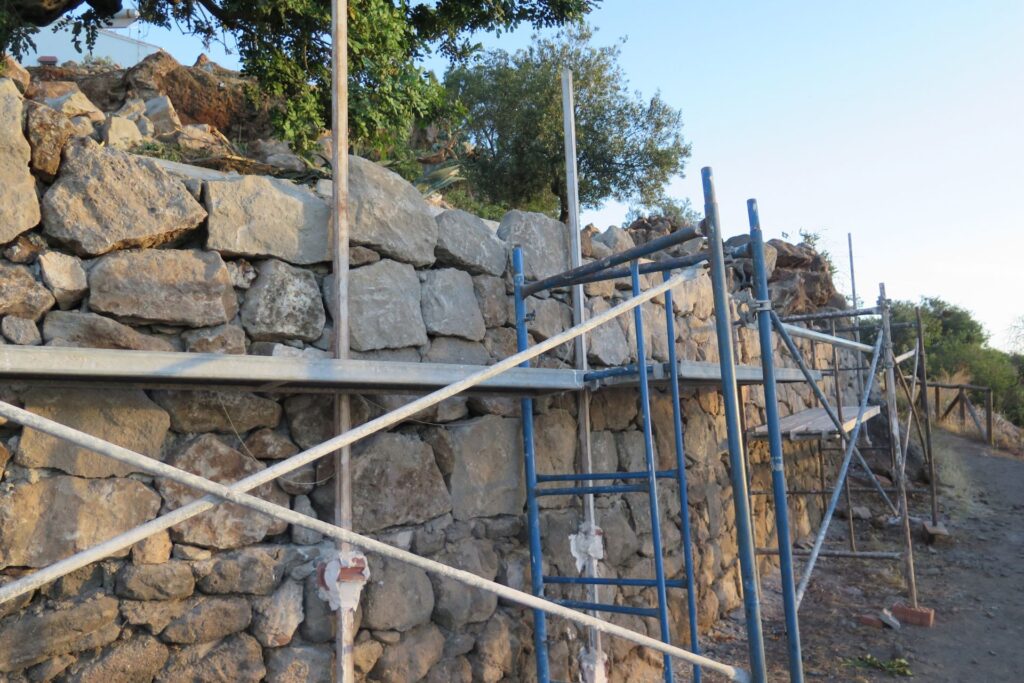
Maintenance And Upkeep
Maintaining the structural integrity and appearance of your retaining wall is crucial, especially considering the unique climate of Auckland. This comprehensive guide will help you understand when and how to perform routine maintenance and recognize signs that may require professional intervention.
Routine Maintenance Tips for Retaining Walls
Regular Inspection and Maintenance
Retaining walls, whether built for aesthetic appeal or structural purposes, require periodic checks to ensure their longevity. Here’s how you can keep your wall standing strong:
1. Visual Inspections: Conduct a thorough inspection of the wall every few months to identify any obvious shifts or damage. Look for cracks, which can be early signs of stress or failure.
2. Weed and Vegetation Control: Plants and weeds can cause significant damage if their roots grow into or behind the wall. Regularly remove any vegetation that poses a risk to the integrity of your retaining wall.
3. Drainage Checks: Ensure that drainage systems are functioning correctly. Proper drainage is critical to prevent water buildup that can increase hydrostatic pressure and undermine the wall’s stability.
4. Cleaning: Remove soil, debris, and other materials that may accumulate at the base of the wall. This not only keeps the wall looking good but also prevents rot and erosion.
Seasonal Maintenance Specific to Auckland’s Climate
Auckland’s climate can be challenging, with its wet winters and humid summers. Seasonal maintenance is essential:
Before the Wet Season: Check the drainage systems and clear any blockages. Water should not pool behind the wall. Ensure that the weep holes (if present) are not obstructed.
Post-Winter Check: After the winter, assess the wall for any damage caused by moisture or freezing conditions. Repair any small cracks or unsettled stones to prevent further deterioration.
When to Seek Professional Help
Recognizing Signs of Retaining Wall Failure
It’s crucial to know when a situation calls for professional expertise. Here are some signs that indicate your retaining wall may be failing:
Visible Cracks and Bulging: These are the most common indicators. A bulging wall or significant cracks often suggest that the wall is failing to handle the earth’s pressure behind it.
Leaning: If any part of the wall starts leaning outward, it’s a sign that the wall’s structural integrity is compromised.
Water Leakage: Persistent water leaks through the wall can weaken the structure and the materials used in the construction of the wall.
Recommendations for Local Professionals and Services
For maintenance and repair, it’s advisable to consult with local Auckland professionals who are familiar with the regional climate and soil conditions. They can offer specific solutions tailored to your retaining wall needs. Always look for licensed contractors with good reviews and proven experience in retaining wall construction and repair.
By regularly maintaining your retaining wall and being vigilant about the signs of potential failure, you can extend the life of your wall and maintain its functional and aesthetic value. Don’t hesitate to seek professional help when necessary to address any issues that are beyond basic maintenance. This proactive approach will save you time and money in the long run and ensure that your retaining wall remains a reliable and attractive feature of your property.
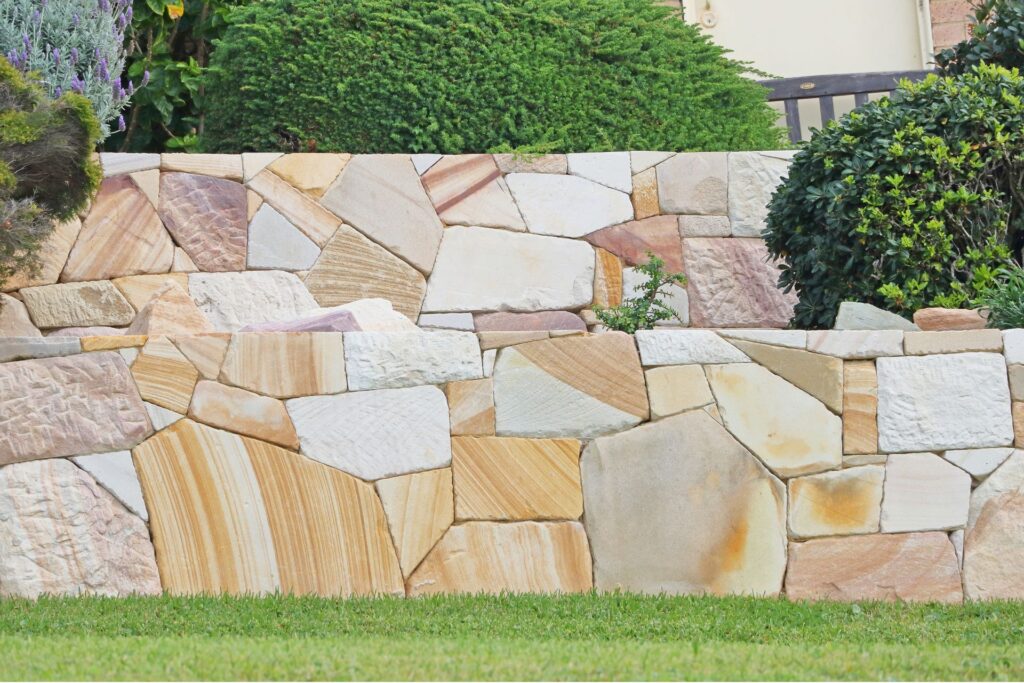
FAQs: About Building Durable Retaining Walls in Auckland
Conclusion
In conclusion, it’s essential to revisit the core insights we’ve shared about constructing retaining walls. Planning with precision is crucial; without it, the structural integrity and effectiveness of your retaining walls might be compromised. Therefore, we strongly recommend consulting with a professional who can offer tailored advice and solutions for your specific needs. By engaging experts, you ensure that your retaining walls are not only built to last but also fulfill their intended purpose effectively. Whether you’re addressing soil erosion, creating usable garden space, or enhancing aesthetic appeal, a well-thought-out approach and professional input are your keys to success.
About the Author:
Mike Veail is a recognized digital marketing expert with over 6 years of experience in helping tradespeople and small businesses thrive online. A former quantity surveyor, Mike combines deep industry knowledge with hands-on expertise in SEO and Google Ads. His marketing strategies are tailored to the specific needs of the trades sector, helping businesses increase visibility and generate more leads through proven, ethical methods.
Mike has successfully partnered with numerous companies, establishing a track record of delivering measurable results. His work has been featured across various platforms that showcase his expertise in lead generation and online marketing for the trades sector.
Learn more about Mike's experience and services at https://theleadguy.online or follow him on social media:

